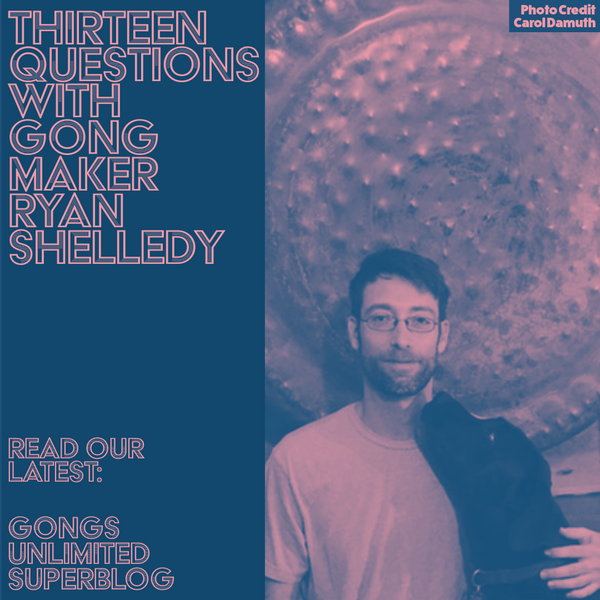Sound Science: Stress, the Brain, and Sound Therapy
Lemon Zest or Lemon Stressed?
The American Psychological Association says that a third of adults (34%) reported that stress is totally overwhelming most days, with higher levels in certain age groups. There's a pretty good chance that you or someone standing next to you is dealing with overwhelming stress.
Going beyond 'regular' overwhelming stress, Post-Traumatic Stress Disorder (PTSD) can develop after exposure to an extreme traumatic event. About half of all US adults will experience at least one traumatic event in their lifetime.
People who develop PTSD experience persistent fearful thoughts and memories of the event, trouble sleeping, feelings of numbness or detachment, and can be easily startled. It significantly impairs someone's ability function. And about 3.6% of adults experienced PTSD in the last year according to the National Institute of Mental Health.
You've probably worked with clients suffering from PTSD or extreme stress in your sound bath and healing practice. Or maybe you've experienced trauma yourself and sought out sound therapy as a way to work through it in a trusted, safe, and calm environment. Either way, you've probably experienced the benefits first-hand.
In today's blog, we're exploring some of the studies and science behind stress and trauma in the brain to better understand how and why sound and music therapy is an effective treatment for people suffering from PTSD and overwhelming or even just day-to-day stress.
Flashbulb Memories
To understand how PTSD and extreme stress affect the brain and what it's like to be triggered by stressors, it helps to understand the phrase Flashbulb Memory–defined loosely as a vivid and enduring memory associated with a highly emotional and significant event.
The experience of the flashbulb memory often includes specific details of the original event and can feel like reliving the trauma all over again. Flashbulb Memories can be produced by emotionally-charged positive or negative events, but when we're talking about extreme stress or PTSD, we're talking specifically about negative events.
On the spiritual side of sound healing, we talk a lot about "energy" that gets stuck in your space and we refer to "pictures" or "negative thought patterns" that people can get stuck in spiritually. These are good analogies for Flashbulb Memories and the way they imprint on your brain–different ways of understanding how you can get stuck in the intense details and memory of a difficult, extreme, or traumatic event. So when we talk about releasing energy, pictures, or negative patterns in a sound bath, it relates to processing and releasing Flashbulb Memories.
There is research showing how the structures and processes of the brain are actually physically altered by stress and trauma in the creation of these Flashbulb Memories and how this interacts with PTSD. There's also research exploring how the same mechanism that creates those Flashbulb Memories can help to process and 'release' them, returning to harmony.
Is it Hot in Here or is it My PTSD?

The official criteria for PTSD (according to American Psychiatric Association's DSM-5) are: "exposure to a traumatic event through direct witnessing, intrusive symptoms like memories or dreams, altered reactivity toward stimuli associated with the event, avoidance of stimuli associated with the event, negative changes to cognition and mood, and clinically significant distress or impairment in functioning."
"To recognize how the brain is altered by PTSD, we can examine key structures in the brain that affect how memories are stored and how an individual experiences stimuli associated with emotion. These structures form a network in the brain in which messages about stimuli are sent to each other, and these messages regulate and influence an individual’s responses (Flor & Nees, 2014).
The circuitries are continually reinforced by habitual responses and more experiences of triggers. This network is altered in individuals experiencing PTSD. The brain is hyperactive in response to negative stimuli, which can result in impairment of day-to-day functioning.
Fear conditioning occurs when an aversive stimulus becomes associated with a neutral stimulus, and the neutral stimulus becomes an elicitor of a fear response. Fear conditioning develops faster and more easily for people with PTSD (Flor & Nees, 2014). This suggests that there are specific aspects of the neural network that have been altered."
https://digitalcommons.spu.edu/cgi/viewcontent.cgi?article=1108&context=honorsprojects
Plastic Brain
To describe how and why the brain changes under stress, science refers to Neuroplasticity. The brain can remap entire areas in response to trauma and other environmental circumstances, adapting to extreme conditions.

The great news? There's also evidence that the brain can reverse the adverse affects of trauma and PTSD using the same Neuroplasticity:
"Neuroplasticity is a term to describe how the brain can change and develop its structures and functions, from the synaptic level to remapping of entire areas (Nash, Galatzer-Levy, Krystal, Duman, & Neumeister, 2014; Stegemöller, 2014).
Plasticity occurs in response to traumatic events and environmental conditions, but it can also occur to reverse adverse effects of a disorder. Treatments and therapies can provide the necessary conditions for neuroplastic changes to occur that help an individual recover from PTSD.
Understanding the plasticity of the brain in persons with PTSD and neurological components of the disorder is crucial to gaining thorough knowledge about its effects and to providing future treatment."
https://digitalcommons.spu.edu/cgi/viewcontent.cgi?article=1108&context=honorsprojects
So when a traumatic event occurs, your neuroplastic brain creates new pathways between neurons in different areas of the brain, forming intense Flashbulb Memories and shortcuts to adapt and prepare the brain for similar events in the future. It's similar to how you may burn your hand on the stove causing intense pain. The flashbulb memory of the experience of that pain is your brain adapting to tell you, "Don't touch a hot stovetop, it is harmful!"
Years later, these adaptive pathways that form due to the brain's neuroplasticity can activate in response to stimuli it has associated with the original trauma (a flash of light, a loud bang, hearing a person's name). While the brain originally adapted to protect you from future trauma, it's now begun associating neutral stimuli with harmful stimuli, unnecessarily triggering your fight or flight response and bringing you back to intense negative pictures, painful memories, and unhealthy patterns.
Bending Towards Harmony
As mentioned above, the same neuroplastic mechanism that creates these trauma pathways can work to create new, healthy pathways, allowing the person to recover from trauma, releasing Flashbulb Memories and painful energy over time.

A range of therapy methods have been tried and tested to aid the neuroplastic recovery process. And there's evidence that sound and music therapy are especially effective.
Maybe you've experienced and witnessed this with your sound bath clients, or maybe you yourself have worked through an extreme trauma, releasing pictures, energy, patterns, and Flashbulb Memories with the help of guided sound bath meditations. Now we can start to understand how and why it has been so helpful to us and our clients:
"Extant evidence that music therapy reduces stress and anxiety in other clinical populations (e.g., children; Westrhenen & Fritz, 2014; Gold, Voracek, & Wigram, 2004; individuals with depression; Guétin, et al., 2009; Erkkila, et al., 2011; Alzheimer’s patients; Svansdottir & Snaedal, 2006) suggests it may have the potential to improve clinical and functional outcomes and foster resilience among individuals struggling with posttraumatic stress. Indeed, music is evidenced to reduce emotional distress (Gross & Jazaieri 2014), foster social connectedness (Gregory, 1997), and improve overall wellbeing (Bonde & Wigram, 2002)."
Why do they think sound and music work so well in activating the neuroplastic recovery process? Researchers think it works particularly well in three ways:
1. Dopamine is released while playing or practicing music, which acts as a reward stimulus, reinforces skills, and creates stronger memories
2. Music influences neuroplasticity by synchronizing the firing of neurons, linking them together and strengthening synapses in the neural network
3. While chaotic, uncontrolled environmental noise can create stress, consonant music and the act of organizing sounds can promote learning, cognition, and memory
A Sound Solution
While we may not all be dealing with PTSD, the information above shows how even small amount of abnormal stress could change the brain even in small ways that don't benefit us. You don't have to be suffering from nightmarish PTSD-level trauma to be negatively affected by stress levels.
Even extended periods of high stress can change your brain in the long term. Maybe you're dealing with some difficult emotional issues–the loss of a loved one, an overwhelming job, chronic health issues–these aren't necessarily PTSD-inducing situations, but the stress can be debilitating and can still have long-term effects.
Maybe working through the trauma of a horrifying past experience or maybe you're just trying to work through regular stress levels. Either way, there's a huge body of research that points to sound and music therapy as a great way to battle the negative neuroplastic effects of stress and trauma.
Also in Gongs Unlimited Super Blog

What's the Difference Between Weighted and Unweighted Tuning Forks?
Tuning Forks are a great way to bring new sounds to your meditations and healings. But what's the difference between Weighted and Unweighted Tuning Forks? What are the best ways to use each? We've got some answers to help you make your decision!

Everything You Didn't Know but Wish You Knew About Quartz and Frosted Crystal Bowls

Thirteen Questions with Gong Maker Ryan Shelledy of Shelledy Sounds
Ryan Shelledy has been making gongs for over a decade from his hand-built foundry in the Midwest. His amazing creations blur the line between, art, sonic sculpture, percussion, and sound healing tools. He is always innovating and developing beautiful, unique pieces that keep us excited for his next delivery of gongs. Learn more about his work in our recent interview with him!


M H
Author